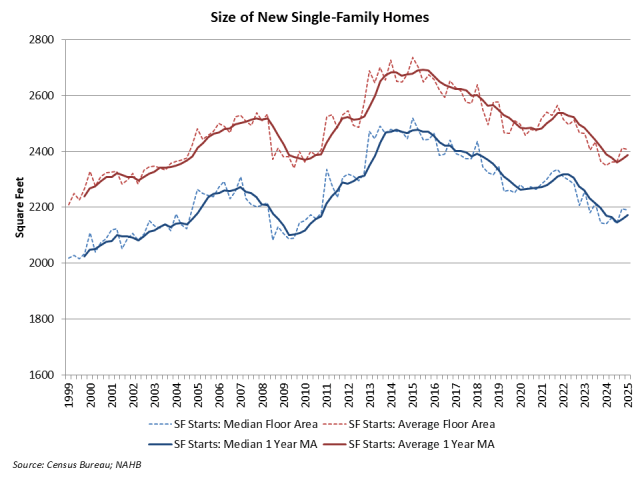Single-Family Home Size Trending Higher
Robert Dietz2025-05-20T12:18:16-05:00An expected impact of the virus crisis was a need for more residential space, as people used homes for more purposes including work. Home size correspondingly increased in 2021 as interest rates reached historic lows. However, as interest rates increased in 2022 and 2023, and housing affordability worsened, the demand for home size has trended lower. According to first quarter 2025 data from the Census Quarterly Starts and Completions by Purpose and Design and NAHB analysis, median single-family square floor area was 2,190 square feet, near the highest reading since mid-2023. Average (mean) square footage for new single-family homes registered at 2,408 square feet. The average size of a new single-family home, on a one-year moving average basis, trended higher to 2,386 square feet, while the median size is at 2,172 square feet. Home size increased from 2009 to 2015 as entry-level new construction lost market share. Home size declined between 2016 and 2020 as more starter homes were developed. After a brief increase during the post-COVID building boom, home size has trended lower due to declining affordability conditions. Discover more from Eye On Housing Subscribe to get the latest posts sent to your email.

